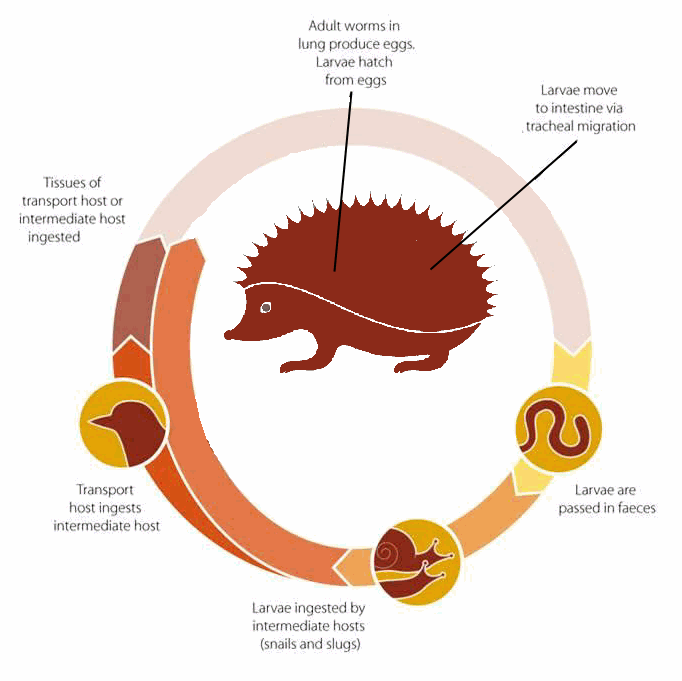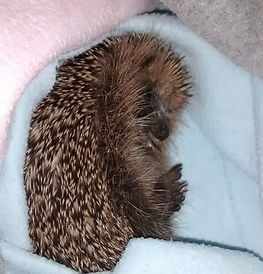



If you find an injured wild animal or bird,
Pawprints Wildlife Rescue may be able to help it.
We can't promise - but we will do our best.
Please call us on 0151-317-8880 in the first instance, so we can provide advice about what to do next.
Our phone line is staffed from 9am - 10pm daily
We are based at 40b Carsthorne Road, CH47 4FB, Hoylake
If you find a hedgehog in need, PLEASE ONLY OFFER WATER AND DO NOT FEED MILK, BREAD, MEALWORMS, PEANUTS OR SUNFLOWER HEARTS

Rehabilitation & Release
Pawprints is a team of highly qualified, hugely experienced animal welfare and charity management individuals. We believe in absolute clinical excellence, effective and safe wildlife care and work to a robust set of policies, procedures and protocols that clearly define the ethical, safe and outcome driven nature of our work.
We believe that the animals we support, come first, and that we are simply tools to be employed in their rehabilitation and release. We have invaded their living space and so we wish to do all we can to make sure they are well and happy in the new environment we have forced upon them.
We know our limits and while we have a passionate desire to rescue every living being, we will grow slowly, expanding and accepting animals only when we know we have the full ability and training to clinically care for them with respect and dignity.




Mange
Mange is caused by a burrowing mite and highly contagious to humans and other animals so hygiene is very important!
A hog with mange will look like it is covered with white powder and affected areas are similar to those of ringworms.
It is treated with Ivermectin, which is only available at vets, not at off the shelf chemists.
Infected sores from scratching and biting need to be treated with antibiotics.

Ringworms
Ringworms are fungal skin diseases carried by many mammals.
In hedgehogs, they are most commonly caused by a dermatophytes, highly contagious skin fungi, such as Trichophyton erinacei, Microsporum canis, Microsporum gypseum, Microsporum cookie and Trychophyton schoenleinii.
Common symptoms include hair/spine loss, scabs/scurf around skirts spine/hair margin, thick crusty skin and weight loss but can vary greatly with some hedgehogs showing no symptoms at all and thus treatment differs greatly too.
Secondary infections with mites and bacteria are common.

Lungworms
Lungworms are a bacterial infection of the lungs and respiratory system caused by a parasite, the nematode worm, which is transferred by earthworms, leading to heavy breathing problems.
Coughing, respiratory distress, nasal discharge, loss of appetite and weight are some of the common symptoms.
Hedgehogs mostly catch lungworms in autumn due to the warm and damp weather.
Treatment takes around 4 weeks and if left untreated can be deadly.
Injuries and Illnesses


Ticks
Hedgehogs commonly have a few ticks as they travel through grass and hedgerows.
However, sick and injured hedgehogs can have very large numbers of ticks, which can pose a threat.
Ticks can, but not necessarily have to, carry a variety of zoonotic/infectious diseases including viruses, bacteria and protozoa - Lyme disease being the most common in Europe.
Ticks can easily be removed with the right tools - however, if you are not trained, please seek help as you can put the animal in more danger otherwise!

Fluke
Fluke may cause extreme hyperactivity and persistent restlessness including compulsively digging at the floor or climbing sides of enclosures.
Hogs with fluke often appear stressed, have reduced appetite and lose weight easily even fighting syringe feeding.
Fluke can be deadly, especially in young hedgehogs.
Faeces are normally pale yellow to green/brown as well as runny, smelly and slimy with heavy infections that can contain blood.

Collapsed hedgehogs
Many hedgehogs are brought into centre because they are either seen wandering around during the day or because they have collapsed, which is mostly due to starvation and dehydration.
If you find a hedgehog in the day or collapsed, please take them to a vet or rescue centre as soon as possible as immediate treatment is needed to save the hedgehog's life.
Please do not attempt to treat the hedgehogs yourself if you are not trained to do so - it could have detrimental consequences for the hedgehog!

Release
Once our hedgehogs have fully recovered and weigh around 600g, we can safely release them back into the wild where they belong.
Ideally, we want to release them where they have been found.
If this, however, for some reason might not be possible, we have a passionate team that carefully verifies suitable release sites.
If release is not possible at all due to health issues and the hedgehog would become an easy target for predators, we carefully select safe gardens where the hedgehog can have a life as close to nature as possible - as the example of Dave shows, who lives with one of our team members.
Soft Release
Whenever we believe a hog might not quite be ready for a full release into the wild, we prepare them via our soft releases.
These are normally carried out in suitable garden spaces and in suitable enclosures.


“I want a garden hedgehog!”
We're on the lookout for suitable release sites for hedgehogs that have spent the winter/spring in our care. We want the best of the best for these rehabilitated hedgehogs so please let us know if you can offer the perfect des-res.
Below are the minimum requirements that all homes must meet. We are looking for homes within Wirral area mainly and within a couple of miles outside of the Wirral but still within the Merseyside/Cheshire area. Other hedgehog rescues will have similar criteria.
1.. You must already have hedgehogs regularly visiting your garden. This is the only way to know that the habitat is suitable and that the hedgehogs will find a mate. You can’t just release one or two hedgehogs and hope they will colonize an area. If hedgehogs aren’t in the area, sadly, there is a reason…..
2. You must be well away from busy main roads – they are hazardous to hedgehogs.
3. You and your neighbours must not use slug pellets, pesticides or herbicides – all of these can cause poisoning and death. You must also avoid use of garden netting, check carefully before strimming and forking (and ideally not strim your garden at all).
4. Your garden must be linked to at least 10 large gardens via hedgehog holes/hedges/open fencing. The ideal garden will offer plenty of ground cover for foraging and nest sites. The perfect garden will offer wild areas for foraging and shelter. The best release sites will be packed with native plants to attract insects – beetles and caterpillars are the top two foods for hedgehogs.
5. You must provide a suitable escape route from any ponds.
6. You must provide some form of shelter. This can be anything from a homemade house under a log pile, to a specially purchased hedgehog box. This will give your new resident a helping hand to set up home. A hedgehog house made under our log store from bricks, twigs and leaves. It provides great shelter from the elements and also a home for insects. If unsure, you can buy one of our
7. You must leave food and water out daily for at least the first month and ideally forever. For advice about feeding please get in touch with us for advice.
8. Not near badger sites. Badgers will predate hedgehogs where they live in close proximity.
If you didn’t get past the first essential requirement, many people find that if they leave food and water out regularly, they discover they do have hedgehog visitors!
Helen
PawPrints Release Officer
 |  |  |
|---|
Meet Dave
Dave was cared for and known by many of the people involved in helping establish this charity.
A bit of background - Dave is a hedgehog in his more senior years and is unfortunately blind and missing a few teeth.
He was a rescue hog who couldn’t be returned to the wild due to his lack of sight.
A secure garden was offered to him and he has been thriving there since late last summer (defying his approximate age).
He gets fresh food and water daily, has a warm dry house and access to the entire garden, he even has his own brick steps to help him navigate the human sized ones - he has no problem navigating with his lack of sight and is thriving in his retirement.
Regular updates on Dave’s progress as he further enjoys his golden years can be found on our Facebook page.
If you want to follow Dave’s story so far follow ahedgehognameddave on instagram.





